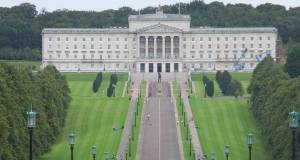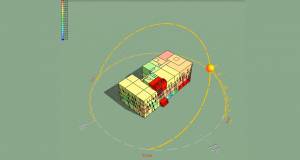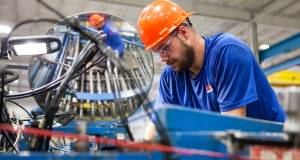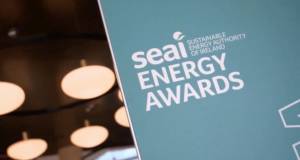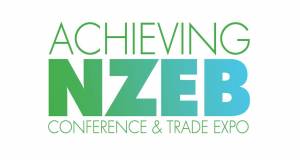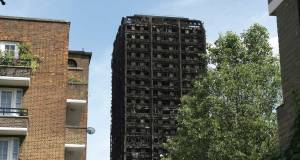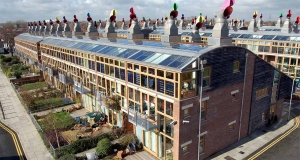- Opinion
- Posted
Generation 'S'

As issues such as climate change and fossil fuel depletion take hold in the minds of an increasingly eco-savvy Irish public, the consequent demand for sustainable construction is leading more and more builders, suppliers, professionals, tradespeople and many more to educate and involve themselves in sustainable technology, materials, principles and techniques. Kirk Shanks, Senior Researcher at the Sustainability Research Development Group, the Focas Institute, DIT describes the development of this new sustainable generation.
The sustainability generation is on its way, and the wave of sustainability is breaking in all areas of the construction industry. Sustainable approaches are now called for and in many cases evident in the mainstream of the majority of activities. Sustainability as a frame is on a rapidly changing, irreversible move toward compromise, shifting the focus onto the reality of effective solutions for mainstream interests. No longer are the aspirations of sustainable approaches going unheard but equally no longer can these aspirations be proposed without being followed through with substance and confidence in their real impact.
Sustainability is an ideal; a spirit; a component of culture, it's a way of approaching things but not a solution in itself. Famously the term was defined by the global community through the United Nations and as such is a convergence and distillation of the common objectives of societies and cultures in their global context. Anything that is considered sustainable, whether it be the use of energy; economic growth; development or construction, is a responsibility and a landscape that effectively calls for consensus driven application of ideas and thinking beyond traditional boundaries - the gates are opening and the possibilities expanding.
The classic interpretation of sustainability as global issues addressed at a local level can be seen to be becoming a reality when we consider the way the institutional, regulatory and market landscape is changing to address issues such as climate change and energy security. Not only do we have continuing development and refinement of programmes aimed at supporting the sustainable use of energy and resources, such as the Energy Performance of Buildings Directive (EPBD), ongoing amendments to Building Regulations, and indirect penalties on carbon emissions, albeit that the effective implementation of these is an ongoing issue, but there is also growing pressure from the market and public on developing acceptable solutions based on broader issues such as concern over quality of life and fuel price fluctuations. Whatever the interpretation is behind why these pressures are increasing or even if they are valid, which is a different topic altogether, we can be sure that they are evident and having a real impact now. Due to this combination of the link between larger scale issues and local action or day to day decisions the emphasis of delivering sustainability is shifting from one of why should a sustainable approach be taken and what it might look like or how it might perform to one of does it perform and what will it cost?
This will rapidly have implications for the effectiveness of solutions; where over the coming years the ongoing distillation of economic; environmental and sociological interdependencies will produce changes in common activities from material use to design strategies to technology solutions to operation and management of buildings. Each of these activities will be viewed with having a common goal relying on a greater balance between them. Whilst this can all be viewed as simply the nature of growth it can equally be said that it is growth both within a new landscape and with a new overall objective. The sustainability generation will demand greater understanding of the inter-dependency between issues, and as with all subsequent generations the horizon will be wider.
A lot of issues that some have considered important for some time but the majority have considered mundane, are being revitalised with the new common broader remit of sustainability. The value and place for each aspect of sustaining the built environment such as construction techniques; material supply chains; design processes; design strategies and solutions; design team communications; technology development and integration; financing; facilities management and regulation all have new dimensions with a common priority. This is not restricting, it is a release of pressure.
For example, the introduction of the EPBD effectively establishes a platform for the creation and development of low impact approaches to energy and potentially broader concepts of the performance of buildings, such as internal environmental quality; including ventilation effectiveness, daylighting and thermal comfort. Granted the influence of the Directive and regulations on the latter may be some way off and may not even become a reality, none the less this direction is now more likely to have an economic impact in the near future than 5 years ago.
Implementation of the Directive necessarily fuels heated debate, its breadth framed through a number of its articles, including air-conditioning systems, boilers and alternative energy systems. This breadth drives greater integration of system solutions and whole building design, and creates a new level of pressure on the interaction between not only the architecture and engineering of buildings but also the full range of stakeholders involved in the construction industry. There is more about the Directive that is enriching for all in the industry than is restricting, which would not have come about without the enlightened contemporary thinking of those active in its development through their input to activities in the European Commission.
We can already see the impact of these drivers in the form of innovative sustainable buildings, increasing interest and market uptake of alternative energy systems, explicit sustainability design briefs, renewable energy targets in local area plans, exploration of related new value added products and commissioning of national studies to explore modern barriers to uptake and support implementation of related initiatives. The question which remains is whether stakeholders can cope with the demand. We only need to look at the examples of sustainable and low impact buildings in Ireland to see that any of these represent the highest degree of innovation, creativity and most importantly effective compromise which is the characteristic that ensures their acceptance within the mainstream.

The award winning Coppinger Court apartment development in Cork City
An aspect of sustainability that has implications for how we view development is the increasingly accepted idea that establishing a knowledge society is an effective way of maintaining or sustaining competitiveness of the economy. It is also accepted that a characteristic of this is the ongoing development and production of value added products and services, creating new export markets. Value added solutions rely heavily on innovation in both exploring new and existing problems from different perspectives and in producing solutions. Whilst the Irish economy is relatively small it is one of the most vibrant and one of the first that has experienced the modern phenomena of such rapid growth. Whatever the reasons for this, considering that rapid growth will inevitably be experienced in other economies, albeit to varying degrees, the lessons learnt; solutions produced and adjustments made to adapt to the changing landscape here will ultimately be of use to others. As many countries have adopted the objective of building knowledge societies our view, in terms of reasons and methods of tackling sustainability issues, should at least have an explicit outward element.
The characteristics needed to drive rapid growth such as adaptability, risk taking and innovation, are needed to stay at the top of the breaking wave of sustainability. Implications for education, training and R,D&D are straight forward and are currently being tackled. Generation S will have the skills to adapt and make use of the breaking wave
Whilst the application of a sustainability perspective may have been viewed in the past as in the interest of only a few the opposite is now the case. As the concept of sustainability is increasingly adopted in more and more of our activities the new challenge is shifting toward development and proof of effective of solutions that satisfy mainstream interests. Sustainable solutions are by nature multi-disciplinary as they explicitly address a wider range of issues which in turn requires deeper understanding and mapping of inter-dependencies. Less time now needs to be spent on presenting the case for sustainable approaches and more on working on the details of what is and what is not sustainable and more importantly what will work!
For example, there is growing evidence that solutions based on energy efficiency alone do not always produce the desired results. In other words the effectiveness of energy efficiency solutions is influenced by issues that are not commonly taken into account, for example rising levels of thermal comfort; commissioning and operation of heating systems; particularly passive strategies; workmanship and so on. It is this that points towards the need for multi-disciplinary approaches and perspectives to solve contemporary problems. There are two fundamental routes to addressing building associated problems in this way: one is to design out the influence of potential wider issues, for example removing human interaction with a system; the other is to assess and account for the sensitivity of a solution to the wider range of influences.
As identified by leading British architect Dean Hawkes, the former can be considered as exclusive and the latter selective. Whilst both are valid they result in very different aesthetics. Therefore successful adoption of either can still both satisfy sustainability objectives whilst also not restricting expression. Essentially both routes rely heavily on innovation and creativity and a willingness to explore - a resurgence of possibilities.

A development of 12 eco houses in Macroom, Co Cork
Although each building project is typically unique in its own right, from an environmental; economic and sociological perspective, realistically it is not always possible to explore the full range of issues to the next level of intricacy for each project. However, it is also not necessarily possible to achieve an acceptable level of sustainability in actual performance using many existing rules of thumb, as these typically evolved under a different climate with a narrower scope. Granted that the level of consideration and synthesis of issues will continue to differ with each building project, there is now an accepted and growing link between economic objectives and producing sustainable solutions. Evolution of the institutional and regulatory environment is setting sustainability related objectives clearly in the economic landscape. It is feasible to conclude that this will continue and bring us to the point where market forces drive demand for sustainability throughout the industry, the extent of which may be weak or strong, but either way is growing. The next generation will view sustainability as part of the mainstream, possibly making the term redundant, but those issues and ways of thinking and solving problems that we now consider as being sustainability in action are now being considered by all stakeholders. This is the terrain where the compromise and details of what solutions are sustainable is being agreed. Generation S is here!
- Articles
- Opinion
- Generation 'S'
- sustainability
- Focas Institute
- Kirk Shanks
- sustainable design
- building regulations
- energy performance
- buildings directive
Related items
-
Scotland to accept passive house as regs compliant
-
 Dulux Decorator Centre launches carbon reduction plan
Dulux Decorator Centre launches carbon reduction plan -
Disappointment at new building energy standards
-
 Northern Ireland claims 2012 regs meet NZEB
Northern Ireland claims 2012 regs meet NZEB -
 Wales to introduce building regulation on overheating
Wales to introduce building regulation on overheating -
 EPA announces €600,000 circular economy innovation fund
EPA announces €600,000 circular economy innovation fund -
 SEAI Energy Awards 2020 open for entries
SEAI Energy Awards 2020 open for entries -
 How will today’s buildings perform tomorrow?
How will today’s buildings perform tomorrow? -
 'Achieving NZEB' event in Cork this Thursday
'Achieving NZEB' event in Cork this Thursday -
 New authority to oversee safety in high rise apartment blocks
New authority to oversee safety in high rise apartment blocks -
 UK buildings regulations set for major overhaul
UK buildings regulations set for major overhaul -
 What exactly is an nZEB anyway?
What exactly is an nZEB anyway?



